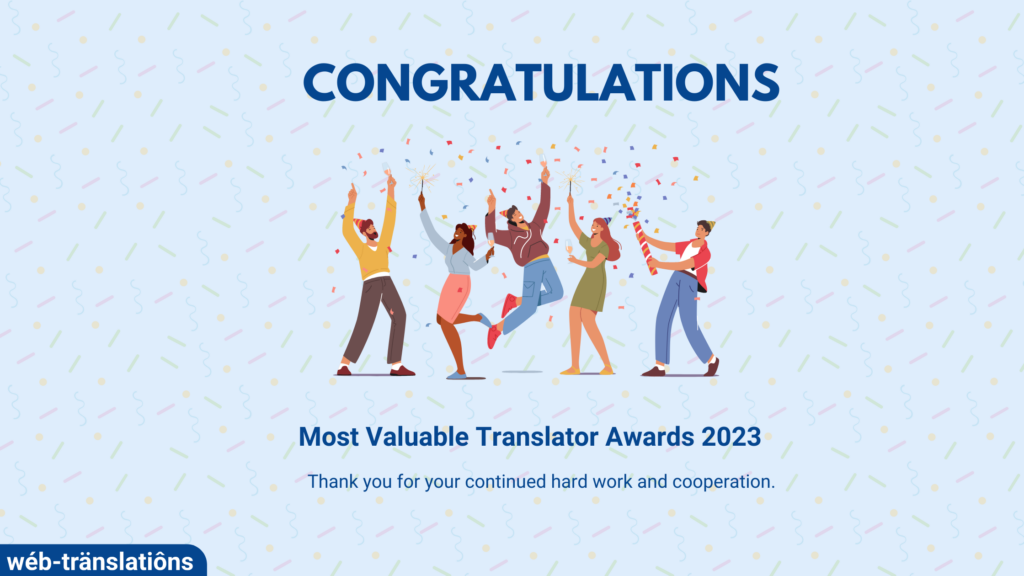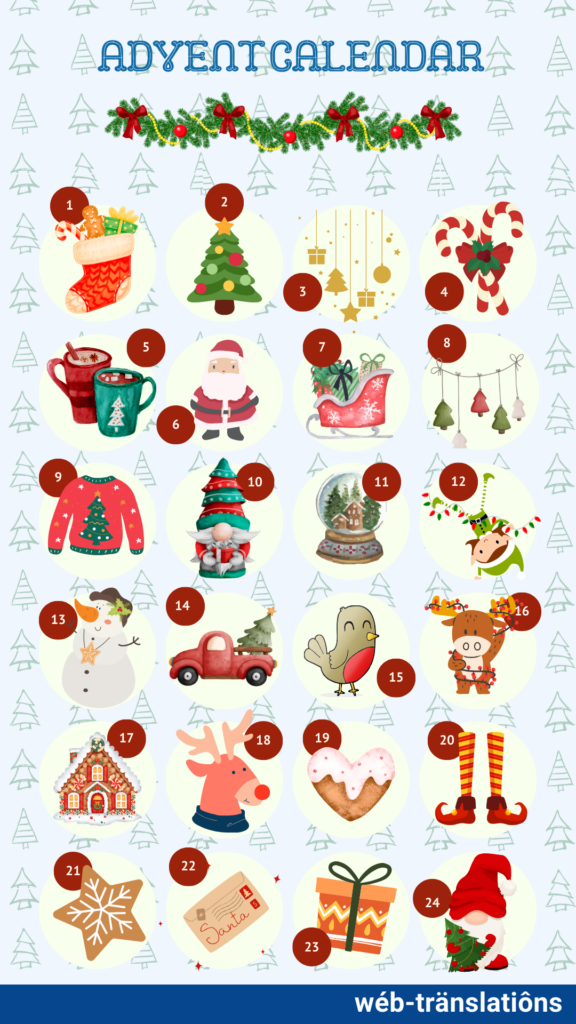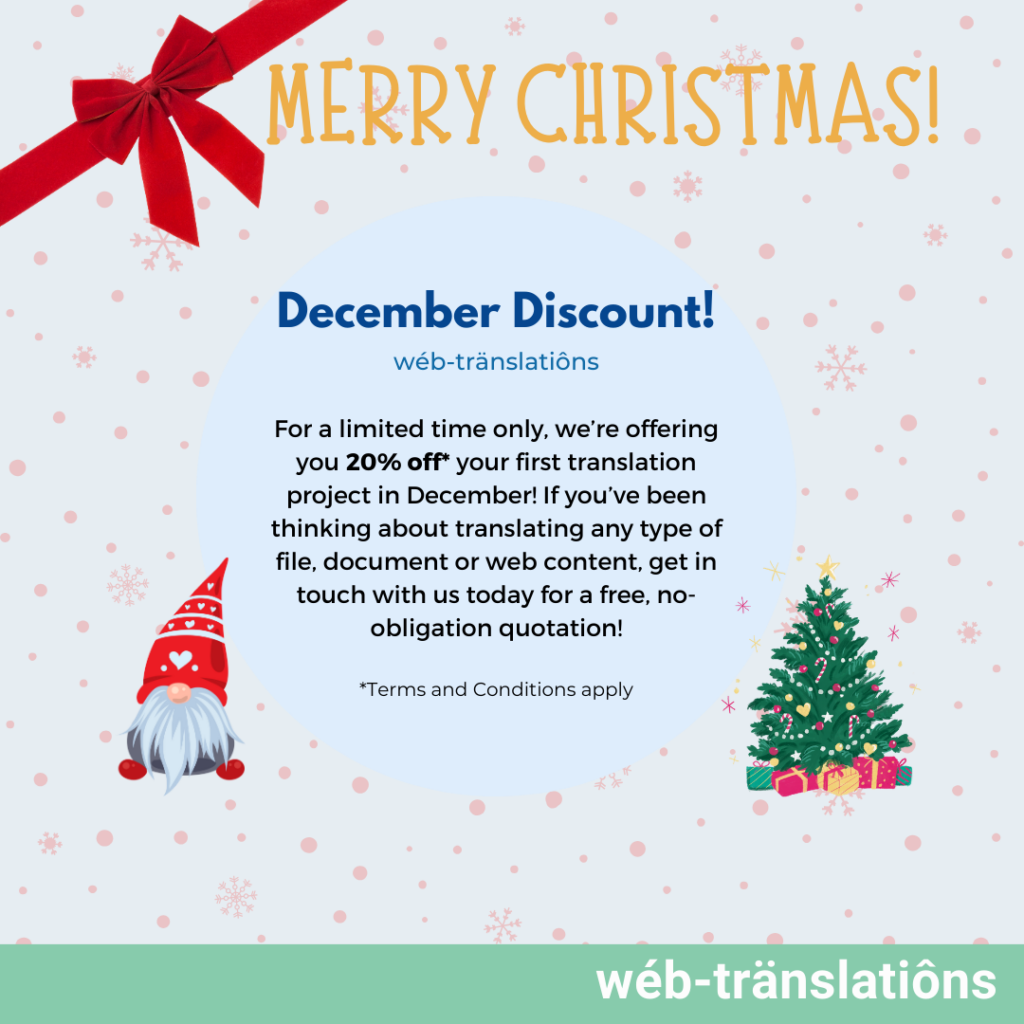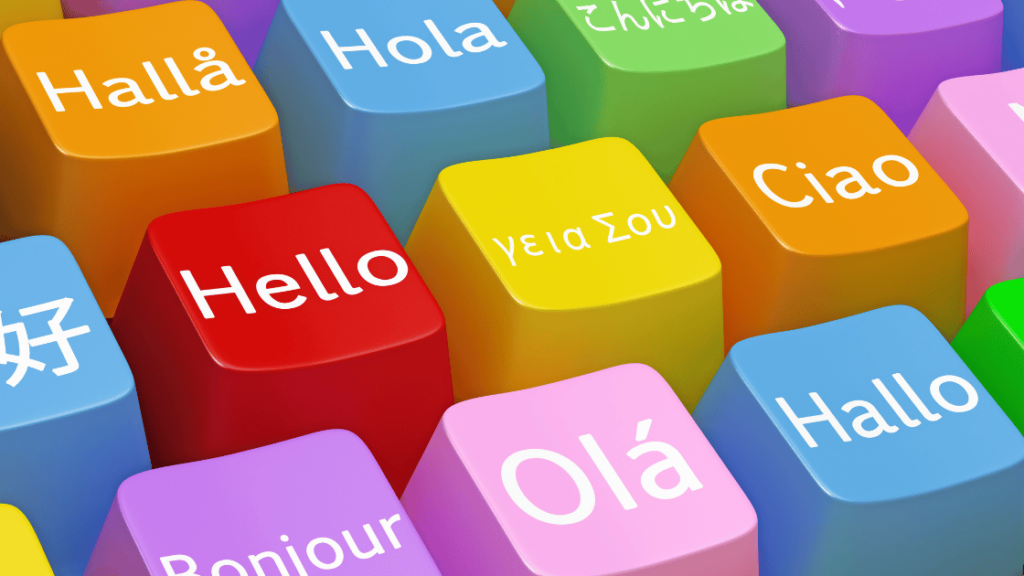International Women’s Day: Top Advice
International Women’s Day is a day dedicated to celebrating the social, economic, cultural and political achievements of women around the world. This year’s campaign theme is to Inspire Inclusion. To find out more about International Women’s Day and the 2024 campaign, take a look at there website here. This year, we wanted to find out more from our linguists about how their journey in the translation industry started.
We have asked several of our female translators the below three questions:
- Could you please tell us a bit about yourself? What inspired you to join the translation industry?
- What has been your biggest success so far?
- If you could give one piece of advice to younger girls and women, what would it be?
In this blog, we’ll share their responses to the final question, but if you want to read their responses to the first 2, you can read this blog here. It’s been lovely to see how the range of women all have their own successes and we think their advice is inspirational.
Thank you to all of the linguists that have contributed to our International Women’s Day blogs!
Ulrike – German
If you could give one piece of advice to younger girls and women, what would it be?
My advice to younger girls and women is to spend as much time as you can in the countries where your working languages are spoken. It will really push your language skills to the next level and help you along the way.
Secondly, work on your confidence! I think that women and girls are still conditioned to make themselves “smaller” than they really are. Stand proud, be your own most severe critic, but also your best friend. Always try to learn from your mistakes and don’t forget to pat yourself on the back when you’ve done a good job.
Most importantly, never, EVER overestimate the competition!

Katrin – Swedish
If you could give one piece of advice to younger girls and women, what would it be?
For aspiring young women considering a career in translation, I impart the wisdom gleaned from my own experience: cultivate a voracious appetite for literature and linguistic exploration. Reading in both native and source languages does not just hone language skill, but also gives a deeper appreciation for the nuances of cultural expression – a quintessential asset for translating.
As for life in general, I’m an advocate for the transformative power of travel. Venturing beyond the confines of familiarity not only broadens horizons, but also fosters empathy, understanding, and a thirst for knowledge. This is an invaluable investment in personal growth and enlightenment.
Ulgen – Turkish
If you could give one piece of advice to younger girls and women, what would it be?

One of my favourite Turkish idioms is ‘to have a golden bracelet on the arm’. This means ‘to have a skill or an occupation that would allow one to live her life without being financially dependent on others’. Why a golden bracelet? Because in Turkish culture, a golden bracelet is a traditional present given to a bride by family members and relatives. The golden bracelets collected on her wedding day can be later easily converted into cash. These are a woman’s security in her new life and for the future.
My native language, the language I learned at school and the ones I learned for pleasure are all my golden bracelets which have allowed me to create a rewarding professional life as a translator and an instructor.
Also, no matter how interrelated or irrelevant the accumulated skills collected (deliberately or not) are, they can be combined to build a purposeful and prosperous career aligned with your interests, passions and personality. To make a long story short, believe in the liberating power of golden bracelets and start collecting as many of them as possible.
Yinli – Mandarin
If you could give one piece of advice to younger girls and women, what would it be?
Personally, I’m always asking myself, “Do I really understand what I’m going to say, write and type? Do I really know what I have said, written and typed?”
Cassandra – Danish
If you could give one piece of advice to younger girls and women, what would it be?
My one piece of advice to younger girls and women ties in to what I consider my biggest success as a freelancer so far – don’t give up in the face of criticism and mistakes, and remember that starting a business is a massive venture and learning process. You will (likely) make mistakes, but no freelancer that has reached success hasn’t – it’s all about learning from them and navigating the challenges that arise. Have confidence in your abilities, and if you discover gaps in them, work to improve them rather than giving up.

Laura – Italian
If you could give one piece of advice to younger girls and women, what would it be?
Be flexible, adaptable and keep learning: you will always come across unexpected barriers in life and work, and the worst thing you can do is create barriers for yourself.
Ingrid – French
If you could give one piece of advice to younger girls and women, what would it be?

Work, work and work 🙂
And also, it is easy to think that what is important in this job is the source language… of course it is. But to me, what needs to be constantly improved is the target language. In my case, I’ve really improved the way I speak and write French since becoming a translator.
We hope you’ve loved finding about some of our female linguists and their successes in honour of International Women’s Day. If you have any questions for our linguists or some of your own advice, please just get in touch with us here.
International Women’s Day: Success
8th March is International Women’s Day. It’s a day to celebrate the social, economic, cultural and political achievements of women around the world. This year’s campaign theme is to Inspire Inclusion. To find out more about International Women’s Day and the 2024 campaign take a look at there website here.
We have asked several of our female translators three questions:
- Could you please tell us a bit about yourself? What inspired you to join the translation industry?
- What has been your biggest success so far?
- If you could give one piece of advice to younger girls and women, what would it be?
In this blog we’ll share their responses to their first 2 questions, so stay tuned for their advice in our next blog. It’s been lovely to see how the range of women all have their own successes and their different journeys into the translation industry.
Ulrike – German
Could you please tell us a bit about yourself? What inspired you to join the translation industry?
I enjoyed languages in school and didn’t want to become a schoolteacher, so translation/interpreting seemed a good career choice at the time. I studied German, English and Italian at Vienna University and graduated in 1998. Men were the exception rather than the rule, the courses were pretty much all-female. Many things have changed since then, but, men are still a rarity in the translation and interpreting classes that I teach at Innsbruck University today. Languages, I believe, are still seen as “female” subjects. However, I have noted that the men who DO end up on language degree courses are often quite technologically minded, which I put down to the rise of AI etc in the language industry. Maybe this development will end up attracting an additional target group, which might be a good thing.

What has been your biggest success so far?
My biggest success, is the fact that I have been making a living out of freelance translation and interpreting for almost a quarter of century. I love our line of work! The fact that it is so varied and that you never know what will come along next. Freelancing keeps you on your toes! You have to constantly adapt and learn new skills – including how to use CAT tools to subtitling programmes. I am hardly ever bored by my work, which is a great success indeed. Also, there are many advantages to working in an industry that is dominated by women, especially once you have a family. Other women tend to be more supportive in difficult situations. For instance when you have a sick child at home but are booked for an interpreting assignment.
Katrin – Swedish
Could you please tell us a bit about yourself? What inspired you to join the translation industry?
I have long harboured a passion for language and communication, which initially sparked aspirations toward careers in writing or journalism. However, it was upon relocating to the United States that I found myself immersed in the multilingual environment of a company. This is where I had the fortune of befriending individuals from diverse linguistic backgrounds. One such friend, who happened to work intermittently for a local translation firm, made me curious. I soon after started my journey as a full-time freelance translator, now 24 years in, I am happy I started that journey.
What has been your biggest success so far?
Without a doubt, my most cherished achievement in life transcends any professional or personal milestone. It is the privilege of witnessing the growth and development of my daughter into an exceptional young woman.
Ulgen – Turkish
Could you please tell us a bit about yourself? What inspired you to join the translation industry?
I have been actively working as a full-time freelance translator and a private tutor of English, Italian and Turkish since 1996. In fact, my experience as a translator goes back to the years when I worked for IBM Turkey in different positions and even to my university years. After discovering that I was putting my heart and soul more into translating and tutoring others than my then current job, I decided to work as a freelancer. I offered my language skills to companies and individuals as both a translator and an instructor. I can say with confidence that this was one of the best decisions I have made in my life. It is very satisfactory and perfectly fits my personality.
What has been your biggest success so far?
The definition of success depends on one’s expectations from life. For me, even the smallest achievement towards my dreams is success. I have always been wary of having big expectations and objectives. My dreams are generally realizable and they never revolve around materialistic values. One dream, however, always seemed unrealizable to me: writing a book. I ignored the urge to write professionally for so many years, but finally in 2018 I prepared a spiral bound Italian language book to use for my lectures. The book got more appreciation than I had expected. So I decided to transfer the content of this book to a blog where I would also post some articles.

However, one month in, the pandemic started. During lockdown, though often stressed and depressed, I had an incredible inspiration to write and very soon the blog became a therapy room for me. I wrote one long article almost every day and on some days I published even two. My mother, who had an unrealized dream of becoming a writer, wished that these articles be compiled in a book and not eventually get lost in the virtual world. I knew this would not have been easy under the circumstances of that period, but I would have done anything to cheer her (and myself) up. This is because in 2019 we lost my younger sister.
I worked very hard and compiled a book of more than 400 pages and got it published. When my published books arrived, I gave my mother one saying that the book of a new author had come out. I will never forget the expression on her face when she hugged me and expressed her hope that with this book good days would start again. At that moment, she did not even know that I had dedicated this book to my beloved sister. I now feel vey happy to know that my book, or rather my sister’s name, is in numerous book cases in Turkey and abroad. I believe that my book, through which I touched the hearts of so many people, has been my biggest success so far.
Yinli – Mandarin
Could you please tell us a bit about yourself? What inspired you to join the translation industry?
The very first time I started doing translation work was in my second year at university. I didn’t think much about it at the time and just went with what came to my mind after a bit of research. Besides taking on projects from a media and communications company, I also worked as an intern in a team preparing for World Design Weeks. This involved mainly editing/writing about art and exhibitions as well as translating.
It was during my first full-time job that I realized I just wanted to use language consciously, especially when it came to work. I thought it would be great if the work I would deliver was simply a product of language, so I started to work as a freelance linguist.
What has been your biggest success so far?
Constantly taking dreamy breath.
Cassandra – Danish
Could you please tell us a bit about yourself? What inspired you to join the translation industry?
I have been in the translation industry for five and a half years at this point. I decided to get into translation as a result of my interest in (effective) communication. For the first four and a half years, I worked as an in-house translator for a retail company. I then left that role to focus exclusively on my freelance career. The flexibility and freedom of freelancing really appealed to me.
What has been your biggest success so far?
Entering into freelance, I was aware that it would come with a unique set of challenges. This includes striking a balance in regard to how much work to take on as well as navigating the worries when not enough work comes in. But also learning to decline projects that I’m not qualified for, even when I could use the money. My biggest success so far is that I have learned from the mistakes I have made. I also take constructive criticism into account, rather than feeling defeated and giving up. This can be challenging at times however.

Laura – Italian
Could you please tell us a bit about yourself? What inspired you to join the translation industry?
I was born and grew up in the North-East of Italy, just 12 km away from the border with Slovenia and 90 km from the border with Austria. Foreign trade and relationships were common occurrence, even with Eastern European countries back in the days of the Iron Curtain. So I realised I wanted to work with languages quite early on. My attraction towards other countries and cultures was also stirred by the postcards we received from a family friend.
I studied German and English at school, then Russian and English at university. During my university years, I started dipping my toes in and falling in love with technical translations. I also did some temp work for local companies, which led to a 6-month contract as interpreter & translator after graduation. It was based in a remote location in Siberia. The rest of my career has been a mixture of employed roles in different industries, and “pure” translation as self-employed, mostly in the UK after my move here in 1998. There is no doubt that my experience within corporate environments has made me a better translator, with a hands-on knowledge in a variety of fields.
What has been your biggest success so far?
Many colleagues in the translation industry struggled during the Covid years; many more are now venting on social media about work dwindling significantly due to MT/AI. So far for me (fingers crossed!), business has remained stable, thanks to several, lovely clients who keep contacting me for their translation projects. I used to get stressed if my emails would go quiet for a few days, now I’ve learnt to embrace the peace and fill my time in lots of other ways. In preparation for the busier days that inevitably follow. Should this change in the future, I’ll find a way to use my skills for something else!
Ingrid – French
Could you please tell us a bit about yourself? What inspired you to join the translation industry?
After three years in the US, I came back to France and decided to be a teacher… But soon, I realized that was not for me. I then thought about another way to use English and translation was the best choice! It’s been 17 years now and I’ve never regretted it for a second 🙂
What has been your biggest success so far?
I don’t know if I have had any big success. I am just doing my job the best I can every day, and getting some positive feedback from the client is very rewarding.
We hope you’ve loved finding about some of our female linguists and their successes in honour of International Women’s Day. Keep your eye out for the blog with their advice which is coming soon, and they have some great tips. In the meantime, if you have any questions for our linguists, please just get in touch with us here.
Why Are Native Linguists So Important for Translation?
To celebrate International Mother Language Day, we’re looking at why native linguists are so important to use in translations, and why they’re absolutely vital to us.
Here at Web-Translations, we pride ourselves on using qualified professional linguists for every piece of translation that we do. Our linguists are important for not only producing high-quality translations, but also for reviewing them.
Having The Extra Edge

When learning a language, it’s not just the grammar and vocabulary that you need to learn. It’s also the various other nuances that you need to adapt to. These include cultural differences. These aspects also apply when translating content too!
This means that if a non-native linguist was used to translate, they would need to carry out extensive research to ensure all of the nuances were translated into the target language effectively. However, to a native linguist these factors will come to them naturally. For example, if someone approaches you on a train, and makes you feel uncomfortable, you may ask ‘can I help you?‘. If you used the more formal form of ‘you’, Sie in German for example, this would indicate to others that this person is a stranger. This would be instinctive for native speakers, but for learners, it might be less obvious.
Essential Knowledge
Going the extra mile to show your target audience that you care is key to increasing sales for your business. For example, if a company is looking to translate content for an area with more than one main language, a linguist would be able to identify any issues or benefits that come with each language. A firm hoping to establish a presence in Barcelona, for instance, must consider not only their Spanish-speaking audience, but also their potential Catalan-speaking audience. Working with a native Catalan speaker would provide essential insights into this target audience. This would also ensure that the company’s products or services are available to even more people than if it were just available in Castilian Spanish. This would help you to form a stronger relationship with your target audience in Barcelona, as it proves that you care about them and have taken the time to research and would consequently convert more sales.
At Web-Translations, we go the extra mile for our clients. As standard, we have all of our translations reviewed by a second native linguist. This is to ensure the highest quality translation is provided. Our native proofreaders check every element of a translation and identify any elements that need adjusting or if there is an alternative translation. After all, we’re all human, so mistakes can happen from time to time. But with our two professional native linguists, these mistakes can be avoided.
Localisation is Key
Native linguists are also incredibly important when it comes to localisation. Knowledge of the target country’s culture allows you to maintain an excellent reputation for the business. This is where native linguists are experts.

Their knowledge is priceless when localising content, especially for marketing or advertising purposes. It can help advertisers reach a wider audience and avoid any potentially offensive mistakes that could easily derail a whole campaign. When car manufacturer Mercedes-Benz launched in China, they translated their name as Bensi. This name actually means “rush to die”, and once Mercedes realised this, they had to rush to restore their reputation after this blunder. The brand soon changed to “Ben Chi”, meaning “dashing speed”.
Native linguists are the best way to guarantee accuracy, quality and performance in translation. That is something that machine translation can’t quite master. Our linguists are invaluable to creating high-quality professional translation. We quite simply couldn’t do our job without them. The extra level of expertise that they bring is not only invaluable to us, but will be invaluable to you too. Their natural knowledge will help elevate your translated content beyond your competitors, as is their ability to ensure your content is free from potentially damaging translation errors and is carefully crafted with important cultural nuances in mind.
Are you interested in learning more about the importance of professional native linguists in website localisation? Check out our Localisation Advice page here! Don’t forget to check out our Twitter and LinkedIn pages for more industry insight as well!
Trados Studio 2022: Service Release 2 Update – What’s New?
Before the Christmas break, we were able to attend RWS’ Trados Update webinar. We were treated to a sneak peak of what’s coming to Trados Studio in the Service Release 2 (SR2). Here are some of the new features we’re most excited about!
Designed for the Future
Making bold steps on the AI front, Smart Help is coming to Trados in the form of Trados Co-pilot. The new virtual assistant will become smarter with each new feature release. Using RWS’ own Large Language Model (LLM), users can ask live questions to help make navigation through Trados easier.

Users can ask a question like “What is a conditional cost on a pricing model?”. Then, Trados Co-pilot will give a detailed answer, including extra links to related topics or information on the RWS site. The Co-pilot is even available in other languages! We saw examples of these in French and Spanish. However, since the examples were in Beta at the time of the webinar, the article links that Co-pilot provided were only to the English versions. This is something which will be addressed soon.
Smart Review
Trados Enterprise users will have early access to the new Smart Review feature. This is an AI review companion for the desktop version of Trados Studio, which will come to Trados’ online editor in Q1 of 2024, with potential to subsequently expand. It can “evaluate” segments, reviewing them and giving each one a score out of 100. It can even determine if the source segment’s meaning is preserved, if parts are missing or there are any mistakes.
Large Language Model (LLM) Integration
With the new SR2 update come more options for users to utilise a wider range of LLMs, now including MTrans for Trados, OpenAI Translator, Rystudio GPT Translation Co-pilot and more! With RWS’ OpenAI Translator App, users get secure LLM access through Azure OpenAI, and the new “temperature” setting. This allows users to set the AI tool to be more deterministic, giving the same answers consistently, or alternatively more flexible. These “higher” temperatures would be useful for transcreation tasks.
Users can also prompt the AI engine to move away from gender-biased language and then provide neutral alternatives. The user can use their judgement to determine the best answer in that instance to help with inclusive translations.

These are the new updates that we’re most excited about. But there are a whole suite of additional improvements coming to Trados Studio in SR2. From accessibility improvements, to being able to augment NMT output with approved terms, to improved memory allocation. Even Dark Mode is coming to Trados!
What are you most looking forward to in Trados’ latest update? Get in touch with us on Twitter or LinkedIn to let us know your thoughts!
Translation and AI: Technology and the Rise of AI in the Industry
In the last few years, the popularity of AI tools like ChatGPT has exploded. Naturally, with any innovation comes the question of how it can be used in different industries. Translation and AI are becoming ever closer, but where could this lead?
Translation Technology Today
The translation industry already has a love-hate relationship with technology as it is. CAT Tools are the backbone of the industry nowadays, and yet Machine Translation (NMT or SMT) remains incredibly divisive. Granted, it does provide opportunities for skilled linguists to drastically improve MT output through Post-Editing which is a very valuable skill. But a translator who uses MT and passes it off as their own is sometimes considered persona non grata – and usually are found out by the CAT Tools they use. Compared to using professional linguists, MT is much less reliable especially for complex texts. At best, the output will be less than ideal, whereas professional linguists can ensure the best possible translations every time.

Innovative technology is becoming ever-present in the industry these days. With software like Google Translate’s camera function, millions of people have access to instant translations within seconds. Waverley Labs currently have a real-time translation app and earpiece on the market. These will help break down, or at least chip away at language barriers for the average consumer… Providing they become affordable for everyone.
For the average tourist or traveller, these tools can help avoid any confusion or misunderstandings while abroad, but they simply aren’t viable in a professional setting like marketing. There are so many things to consider in marketing translation than just the act of translating itself. Linguists need cultural awareness so as to avoid creating translations that could be seen as offensive to the target audience; they need to be aware of any localisations. For example, advertising in European Spanish might not work as well in Mexico compared to Mexican Spanish.
The Translation and AI Debate

AI being on the rise, while intriguing, is something to be wary of. Granted, software like ChatGPT could generate content at unbelievable speeds. But there is no guarantee of quality, which is essential. Even though professional linguists can’t produce translations at the same speed, in this industry quality is much more valuable than quantity, or even speed for that matter.
That being said, translators today do have technology to assist them which is worth its weight in gold. Translation Memories (TMs) are wonderful tools, helping linguists to create high-quality and consistent translations at quicker speeds. The key factor here is that the TM’s content is created by the linguists, so there is a high quality input which ensures equally high quality output when the TM is used.
Translation and AI – Where it could go wrong?
Despite the infinite possibilities of AI in translation, one can’t understate the potential negatives.
For one, if a company needs sensitive documentation translated, and the AI engine’s security is sub-optimal, someone could easily uncover the sensitive data, including a client’s personal information. Given how many translations contain this kind of information, this could prove a sizeable threat to data security.

Human translators can safely ensure any linguistic nuances like idioms, jokes and colloquialisms are correctly translated. There are plenty of articles online discussing translation errors that have been churned out by Google Translate, and the use of AI in the industry could well invoke some déjà vu as its output misses the nuances and context from a source text. Perhaps a tired take, but it’s definitely true to argue that human translators are indispensable, especially for creative texts.
What’s Next?
Thanks to AI software’s constant adaptation and innovation, the technology is always the worst it will ever be. In other words, it will always keep improving and correcting its flaws. Any drawbacks that are found now are probably being worked on and corrected for the next version of the software. It could also make the industry over-reliant should it gain a substantial foothold. If it were to become common practice to use an AI tool for translation, necessary server maintenance from the designers or a simple internet outage could take it out of commission for who knows how long. This could drastically delay the progression of projects, causing no end of problems across the whole process. Project managers would be denied access to files. As such clients and end clients would have to wait longer for deliveries or updates.
Human linguists are, and for a long time will be the safest way to guarantee a consistent, high quality translation. The potential litany of disadvantages that AI translation presents are not worth the risks in a professional setting when using a trained linguist opens the door for more nuanced, accurate translations for any target audience.
Here at Web-Translations, we always use native linguists with a wealth of specialisms for any sector you need. If you have anything you need translating, contact us for a free, no-obligation quote today.
How do you think AI will change translation in the future? If you’re excited by or cautious of the possibilities, why not let us know on our Twitter or LinkedIn pages? We’d love to hear your thoughts!
Most Valuable Translator Awards – 2023
We hope 2024 has got off to a good start for you! It’s January again, which can only mean only thing… it’s time to announce our Most Valuable Translator Awards.
In order to show our appreciation for our linguists, each January we like to announce our Most Valuable Translator Awards. Translators who are given this accolade are those who have repeatedly gone the extra mile and who have helped us when we have needed them most.
It of course goes without saying that we are incredibly grateful for all of our freelance translators’ help and really value all of their hard work. They respond promptly, produce high-quality translations, and are always kind! It is truly a pleasure to work with them all. It is so difficult to choose just 15, as each one of them works so hard and it’s a pleasure to work with you, so thank you to you all!

However, the Web-Translations team have been particularly impressed by the below group of linguists this year. Some have provided invaluable assistance on urgent projects, while others have consistently provided high-quality contributions for our key client accounts. Their professionalism, communication and translation talent is second to none and does not go unnoticed.
Please join us in congratulating the following 15 linguists (listed in alphabetical order):
- Axel Couton
- Basel Jbaily
- Carles Hernandez
- Cassandra Herrmann
- Christina Pauly
- Gizem Kartum
- Ingrid Devanne
- Katrin Jarvis
- Laura Mussutto
- Nanda Weiland
- Octavian Blenchea
- Pablo Montero Llano
- Rafael Molina Pulgar
- Thomas Carlsen
- Yookyeng Jeon
Thank you from the bottom of our hearts! We look forward to working with you, and all of our fantastic linguists, throughout the next year! See you next January for the next Most Valuable Translator Awards.
Love,
The Web-Translations Team
10 Weird Phrases from Around the World
All around the world, there are a plethora of weird phrases that, at first, sound like complete nonsense. Once you understand them, though, they make a lot more sense. On top of that, a lot of them are quite funny to think about! In this blog, we’ve gathered together some of our favourite phrases from around the world:
POLISH
“nie mój cyrk, nie moje małpy” – “Not my circus, not my monkeys”
This Polish phrase is perhaps the best way to tell someone that something is absolutely not your problem. In fact, I’ve found myself using this phrase in everyday conversation, that’s how much I love it!
ENGLISH (WALES)
“I’ll be there now in a minute”

To the untrained ear, this could sound confusing at best, and completely nonsensical at worst. However, it’s quite simple: it just means someone will be there soon, but they can’t say how soon.
GERMAN
“Zwei Dumme, ein Gedanke” – “Two idiots, one thought”
The phrase “great minds think alike” has a second part that is often missed; “…but fools seldom differ”. This German idiom is similar to the latter, but in typical German fashion, is much more direct.
SWEDISH
“Hjulet snurrar men hamstern är död”- “The wheel is spinning, but the hamster is dead”
This entry from Sweden is a much more brutal-sounding equivalent to the English “the lights are on, but no one’s home” or “a few sandwiches short of a picnic”. It is used to describe someone who is considered less intelligent but can also be used to describe someone who doesn’t react when you speak to them.
ENGLISH
“It’s like Blackpool Illuminations in here”

6 words that bring dread to those of us who grew up in the UK – this unique turn of phrase is most often heard when an unnecessary amount of lights are turned on in a room, to the point where it looks like the famous Christmas lights that illuminate the seaside town of Blackpool, England.
ARMENIAN
“Գլուխս մի՛ արդուկիր (glukhs mi՛ ardukeer)” – “Don’t iron my head”
A useful phrase for when someone is being particularly bothersome or annoying. This Armenian phrase is perfect for when you need someone to leave you alone after a busy day at work.
CZECH
“Chodit kolem horké kaše” – “To walk around in hot porridge”
This is the Czech equivalent of the English “to beat around the bush” – avoiding the main topic of conversation, or approaching it in an overly cautious or roundabout way.
SPANISH (MEXICAN)
“Se me fue el avion” – “The plane left without me”

Mexico’s entry on this list is used when something gets away from you – thankfully, not an actual plane in this case. It’s used when someone loses their train of thought, or they forget what they were saying. A similar phrase in English would be “I was away with the fairies”.
ITALIAN
“Arrampicarsi sugli specchi” -“To climb the mirrors”
When you’re arguing with someone and they know they’re wrong but can’t, or won’t, admit it, you’d say that they are climbing the mirrors. In English, you’d say that they are clutching at straws. Both equally weird phrases, right?
DANISH
“Før Djævlen Får Sko På” -“Before the devil puts his shoes on”
When someone is an early riser in Denmark, they’re said to wake up before the devil puts his shoes on. People will also use this phrase when they have to wake up at the crack of dawn for something.
We hope you’ve enjoyed hearing about these weird phrases used around the world. Do you know any weird and wonderful phrases in another language? We’d love to hear them! Feel free to share your favourites with us on our Twitter or LinkedIn pages!
New Year Goals for 2024
Happy New Year! We can’t quite believe we’re in 2024 already! Here’s to a month or so of catching ourselves writing the wrong year in our diaries. It’s been 100 years since the first ever foreign language broadcast on US radio, and it’s already been 20 years since the launch of Facebook! Where on earth has that time gone?
With a new year ahead of us, let’s look at some language-related challenges we can set ourselves! We love a challenge, so we’re excited to see what we can achieve this year.
1. Learn a New Language
We couldn’t leave this one off our list! In 2020, 30 million people attempted to learn a new language, according to Duolingo. We think we can beat that easily! Learning a new language is always such a fun and rewarding adventure, and the new year is always a great time to start. The best part is that there’s no wrong way to learn – find however you work best and keep at it.

2. Find People to Share Goals With
Sharing a New Year’s Resolution with others is a great way to make sure you stick to it. If you have a person or group of people there to help you keep on track, you’ll find it much easier to hold yourself accountable. You can even make a little competition between yourselves to really push one another.
3. Travel
Easily the most exciting entry on this list, and one of our favourites! A new year means new opportunities and new adventures. Whether it’s a weekend away, or a wonderful two-week getaway, take the leap and see the world this year. There’s nothing quite like exploring a new city or country with plenty of new experiences waiting for you.

4. Watch International Films & Shows
This is a great way to immerse yourself in a different culture, and get a feel for how a language sounds. Not only do these movies and shows offer great opportunities to learn, but a lot of them are simply just a fantastic watch. If you’re suck on where to start, take a look at our previous blog posts on our team’s favourite international TV shows. For those of you with a taste for something spooky, we’ve even shared a list of our favourite international horror films for you to enjoy.
5. Get Your Content Translated.
Granted, this is more business-oriented for us, but if you’re looking for a way to open doors to new ventures and a world of new business in 2024, then translate your content! Customers are much more likely to buy a product or service if it is offered to them in their native language. This will allow your immediate and long-term sales to benefit hugely!

A new year bringing in new customers sounds amazing, don’t you think?
Do you have any language-related goals for 2024? We’d love to hear all about them! Let us know what your aims are for the new year on our Twitter or LinkedIn pages.
From the team at Web-Translations, we hope you all have a fantastic 2024!
Advent 2023 Round Up
Following on from the success of our first Web-Translations advent calendar last year, we thought it’d be rude not to create a new one this year! We’ve been sharing all the days on our social media.

This year’s advent calendar is full of various ways to say ‘Merry Christmas‘ around the world, as well as some of the traditions that take place. On social media, the team have been sharing short videos each day of the doors being opened. However, in case you’ve missed it, don’t fret! In this blog post we’ve collated all of our advent surprises and put together a complete Christmas countdown for you!
So, sit back and relax as we look back over our festive month! Also, don’t forget to check out our other festive blog posts including one all about our favourite international Christmas films!
Day One
First up, we started in Mexico!
Day Two
And for day two, we head over to China…
Day Three
After this, we moved to the French Caribbean island of Martinqiue…
Day Four
However, on day four we learnt Merry Christmas in German…
Day Five
Subsequently, we stayed in Germany and learnt about a German tradition…
Day Six
On day six, Hanukkah was celebrated!

Day Seven
On day seven, we wore our favourite cheesy Christmas jumpers in honour of Save the Children…

Day Eight
We travelled to the Netherlands…
Day Nine
Next, on day nine, we flew across the Atlantic to Barbados…
Day Ten
Next, we said Merry Christmas in Ukrainian…
Day Eleven
We stayed in Ukraine and learnt about Kutya…
Day Twelve
Following this, we headed south to Greece…
Day Thirteen
We explored the festive tradition in Ireland…
Day Fourteen
Then we went to Italy and learnt their festive saying…
Day Fifteen
We took a short trip to Switzerland and learnt about one of their traditions…
Day Sixteen
Joyeux Noël was our phrase on day sixteen…
Day Seventeen
We explored the Filipino tradition of Ligligan Parul…
Day Eighteen
Then on day eighteen it was international Arabic day…
Day Nineteen
We returned to interesting traditions with wafers on day nineteen…
Day Twenty
Then we remained in Poland and learnt Merry Christmas on day twenty…
Day Twenty One
We headed over to New Zealand for a barbeque on day twenty one…
Day Twenty Two
And we said Merry Christmas in Hungarian on day twenty two…
Day Twenty Three
On day twenty three we celebrated the Little Christmas in Norway…
Day Twenty Four
And last but not least, we said Feliz Navidad on day twenty four!
And that’s it! We hope you have enjoyed learning about festive traditions from all over the world! We’ve certainly loved it!
Thank you for taking the time to read our blog. We hope you have the most wonderful Christmas and a Happy New Year!!
See you in 2024! 🎉
Love,
The Web-Translations Team
December Discount
For the month of December, we are offering a 20% discount on all translation projects. So, if you have some content that you’d like to translate, get in touch with us today for a free, no-obligation quotation!

We can offer you:
- A Dedicated Project Manager
- Competitive Translation Rates
- Flexible Payment Terms
Further still, we have a great track record working for clients in a wide range of industries. You can read all about our experience on our portfolio page! Moreover, if you’d like to get to know us more, why not get in touch with our experienced team? That way you can find out what we could do for you.
Terms:
- 20% discount will be applied to our standard rates of translation and proofreading
- Discounts will only be applied to projects exceeding £60
- Furthermore, discounts cannot be applied to Pay-As-You-Go accounts
- This offer is restricted to one order per client
- Please remember that this offer cannot be combined with any other discount
- This offer will expire at 17:00 BST, 31st December 2023
However, if your content isn’t ready for translation, keep an eye out on our social media for future offers. Also, while you’re there, you can also check out our Christmas countdown – we have lots of fun content in store with our very own advent calendar!
International Translation Day: Fun Facts
International Translation Day falls on September 30th every year and every year the day seeks to celebrate language professionals whose work plays an important role in bringing together nations.
The day has been in existence since 2017 when the General Assembly of the UN adopted resolution 71/288 to foster peace and it takes place on 30th September in order to celebrate the feast of St Jerome – the Bible translator considered the patron saint of translators.
As a translation agency, we of course couldn’t let this occasion pass by without a little celebration and we wanted to share this celebration with you by offering some translation facts. We hope you enjoy learning a little more about translation.
An Old Profession
Firstly, did you know that translation has been around for centuries? The Old Testament is thought to have been translated into Greek in the 3rd Century BC!
Most Translated Authors
Agatha Christie, Jules Verne and William Shakespeare are the three most translated authors of all time. Three incredible authors, we think you’ll agree!
Latin Roots
The Latin root of ‘translator’ is ‘translatus’ which means to be carried over. Consequently, the literal meaning of translation is to carry something from one place to another.
Most Translated Children’s Book
The most translated children’s story is Le Petit Prince (The Little Prince) by Antoine de Saint-Exupéry. It has been translated into more than 500 languages!
A Dangerous Profession
Did you know that translation used to be quite a dangerous profession? William Tyndale, for example, was executed in Holland in 1536 due to his translation of the Bible into English being labelled as heretic.

We hope you’ve enjoyed learning a few translation facts! If you have any facts that you’d like to share, please reach out on social media. Equally, if you have any projects that you require our assistance with, please get in touch!
Exporting Internationally: Where To Start?
Transitioning from a business working solely in the UK to a business that exports internationally is no small feat. There is a lot to consider before exporting to make sure that it’s the right decision for you, your business and your team.
In this blog, we’re going to highlight some aspects to consider when looking at exporting your goods/ services. The information in this blog is predominantly based on a webinar that we attended. It was hosted by The Export Academy at The Department for Business and Trade. They offer a wide variety of webinars, so take a look at their website for more information. This is just a small collection of things to consider, however we hope that this helps you to start the process:
Finances

The step-up into exporting has a huge ROI, but does come at a risk. Do you have enough funds to invest into the initial transition? For example, you’ll need to put multi-lingual marketing strategies in place, as well as the systems to assist with the overseas operations of the business.
Competitors
Are your competitors already exporting internationally? If so, you can use this to your advantage. Where do they currently export to and, more importantly, where don’t they? This can show where they are successfully exporting to, but may also highlight where they haven’t been so successful. It may also be worth considering if exporting your product to certain countries is an already crowded market. Is there enough demand for your product too? Try to highlight your USP to help stand out from the crowd.
Location
The world is such a large place that it’s difficult to decide on where to start your export journey. Reviewing your social media and website analytics allows you to see where there is existing interest in your product and company. Build on what you already have! It may be that you branch into one European country first and then adapt your strategy slightly for other European countries if this first step is successful. Once you’ve invested into the initial systems, they will be in place for you to scale up into multiple countries.

Another aspect to consider is whether your product is suitable for the country and climate? For example, if the majority of people in the country don’t own a house with a garden and instead have a small balcony, selling a tool to help achieve the perfect lawn may not be worth the investment into that country.
Practical Considerations
Are there specific regulations and requirements in the delivery country? They may have specific requirements surrounding IP for example, including patents and trademarks. This is certainly something to look into before beginning the process. It would also be worth looking into whether there are specific regulations of services in the country that you’re exporting to. What do you need to do or provide in order to meet the regulatory status? You may need to register with a country-specific professional body or may need an additional country-specific certification for example.
We hope this blog has given you a basis of aspects to consider before branching overseas, but if you’re looking to export, don’t let language barriers stop you! With over 20 years of experience, we have the expertise to bridge these boundaries for you. Just get in touch with us and we’d be happy to provide you with a free quotation. Keep an eye out on our social media pages for various other export-related blogs!
Social Media Translation: Challenges and Solutions
We all know how important social media is in today’s society. Your social media platform and website is your online shop window – a way to attract customers to find out more. However, many businesses only write their content in their native language. Translating social media content does however have its challenges. After all, adapting and launching your product or service in another country is a huge task. In this blog, we’ve highlighted some of the challenges that you may face but also some suggestions that may help you overcome them too.

The Challenges
Culturally Appropriate
It’s important to ensure your content is suitable for the target audience. This is particularly important for brand names and slogans, but also for images. We have seen some translation mishaps when dealing with brand names. For example, Mercedes-Benz attempted to enter the Chinese market using the brand name ‘Bensi’. This was a shortened brand name to suit the Chinese market, but unfortunately it translates to ‘rush to die’. This is certainly not something that you want to associate with your brand and was damaging for their reputation. On the other hand, a good example of translating a brand name is Carrefour’s for the Chinese market (家乐福 ). This translation relates to the pronunciation of Carrefour, but it also means ‘a family being very happy when shopping in the supermarket’.
Platform
There are various platforms that are used globally, so it’s certainly worth looking into these before making this decision. The different platforms have their own rules and ways of communicating. Facebook is predominantly text, but Instagram is full of images and videos. This means that the images would need to be culturally appropriate and tailored to the country’s audience. In this survey, ‘72% of consumers now say they only engage with marketing messages tailored to their interests’.
It’s also a good idea to subtitle your videos if there is dialogue, so that they are accessible globally. It’s not just the format, that varies, it’s also the length of content. LinkedIn allows you to share long, in-depth content, but Twitter has a very short character limit. This character limit makes it difficult to translate into language that expand during translation. English into French translation for example expands by 25%.

SEO
Translating your content helps you to reach your international audience, but if it’s not Search Engine Optimised, few people will actually see it. There is a huge amount of content shared on the internet every minute of every day. To put this into perspective: 95 million photos and videos are shared on Instagram each day, translating to 65,972 each minute! This is why it’s important to optimise your content. You may already optimise the content in your native language, but the same also needs to be done to your multilingual content. This is where we come in. Translating keywords isn’t as simple as finding the equivalent meaning in the target language. For example, in English you may use ‘houses to buy’, but when translating into German for example, ‘apartments to rent’, as this would be a cultural difference.
It’s a daunting task adapting a brand for another target audience, but it’ll make your audience feel valued. This, in turn, will increase your sales conversions since consumers feel more comfortable purchasing in their own language. We are experts in translation, so we can help protect your global reputation. If you’re interested in localising your social media content but are unsure if on the best way forward, feel free to get in touch and we’d be more than happy to offer our advice!
The Rise of Machine Translation Subtitles in China
Bridging Language Barriers with Less Human Labor
In recent years, the emergence of machine translation (MT) technology has revolutionized various industries, and one notable area of its application is in subtitling for movies, TV shows, and especially online content. China, with its vast linguistic diversity and booming entertainment industry, has taken the step of embracing MT subtitles as a powerful tool to bridge language barriers and reach a wider audience. This article explores the growing popularity of MT subtitles in China and the impact they have on the entertainment landscape.
How Machine Translation Subtitles Works
MT subtitle services, powered by artificial intelligence (AI) and neural networks, typically employ a workflow that resembles that of a human translator. First, advanced algorithms identify and transcribe the spoken words in the video. The text is then translated by a built-in artificial intelligence translation engine. The machine then matches the completed subtitles to the video’s timeline and appends them to the video. Finally, the user can choose to export just the subtitle file (suffixes of .srt, .vtt, .ass) or export the video with embedded subtitles directly. Users may be able to customize subtitle styles, depending on the service provider.

The Need for Machine Translation Subtitles in China
Foreign media content has always been welcomed on the Chinese entertainment market. As globalization accelerates, the demand for content from various countries and cultures increases. The introduction of foreign content, such as films, TV shows, and documentaries, satisfies Chinese audiences’ demand for globalized entertainment, allowing them to better comprehend and experience stories and cultures from around the world. Chinese audiences desire a greater selection of these multimedia productions to enhance their entertainment choices. Traditional manual subtitling is time-consuming, expensive, and insufficient to meet the demand for the vast introduction of foreign content. Thus, the market is turning to the rising MT subtitles.
Current Machine Translation Subtitle Services in China
China currently has three main categories of MT subtitle suppliers. Streaming platforms provide Closed Captions as the first category. Before a viewer can choose to turn on these subtitles while viewing a video, the video’s publisher must grant permission. The quality of the translation is closely related to the quality of the platform’s machine translation engine. The second category of this kind of service is offered by language service providers, such as NetEase’s Sight and Xunfei Hearing Subtitles. These services are often fully functional and even support other minority languages. However, they often come at a high price. The third category consists of small applications created by enthusiasts of subtitles. Usually, these programs continue to rely on external translation engines, but they can incorporate the API keys of multiple engines into a single program.
Challenges and Limitations
While MT subtitles offer undeniable advantages, they are not without limitations. Complex idioms, cultural nuances, and context-specific references can make it difficult for machines to accurately translate. Furthermore, machine translation may not always capture the subtleties of tone and emotion, potentially affecting the viewer’s understanding and immersion in the content. For topic-jumping online content, the MT engine frequently breaks sentences incorrectly, resulting in inaccurate translation output. In addition, owing to historical factors in the translation industry, the MT quality of Chinese-English language pairs remain the most. Due to the insufficiency of databases, the quality of inter-translations between other foreign languages and Chinese is unsatisfactory. The quality is sufficient for a native Chinese speaker to grasp the general idea, but the target text is unreadable.

Future Implications
As MT technology and AI continue to evolve, we can expect further improvements in the accuracy and quality of subtitles. More developers are exploring ways to integrate machine learning with human expertise to enhance translation output and ensure culturally sensitive adaptations. Additionally, advancements in voice recognition and real-time translation may pave the way for instant machine translation subtitles during live broadcasts and events.
Conclusion
MT subtitles have become an indispensable tool in China’s entertainment industry, enabling diverse audiences to enjoy content across language barriers. While challenges remain, the ongoing advancements in MT technology hold promising prospects for breaking down linguistic barriers, fostering cross-cultural communication, and creating a more inclusive media environment in China and beyond.
Guest Post by Yujia Yang.
Meet Our New Intern, Yujia Yang
Hi everyone,
It’s me, Yujia Yang. I’ve just started working as a translation intern at Web-Translations. After earning my Bachelor’s Degree in Translation from the Chinese University of Hong Kong, Shenzhen, in 2022, I am now pursuing my Master’s Degree in Translation Studies at the University of Exeter in order to enter the field as a professional translator.
As someone who is not very interested in the outdoors, the way I passed my time as a child was by reading books. I’m not picky about the kinds of books I read, and among them is the excellent foreign literature that has left a lasting mark on my life. I particularly enjoyed Roland Ingers Wilder’s Little House series, which opened my eyes to a very different way of life from my own. I also enjoyed watching nature documentaries.
Since then, I have found literary translation and audiovisual translation to be amazing careers. It gives many people the opportunity to explore the world beyond their native language. So, I made a point of learning them when I was working on my bachelor’s degree. I also found a part-time job as a subtitle translator and got to experience the industry firsthand. This experience has only strengthened my determination to become a professional translator.
To be honest, I don’t think about wealth and fame as a beginner translator. I only hope that my work can help more children explore the world outside of their mother tongue. Web-Translation looks like a great company, and I can’t wait to learn here!
Summer Solstice Festivities Around the World
We all love the Summer Solstice because it means that summer is here! The lovely light nights, the wonderfully vibrant gardens and of course, we can also hope for some sunny weather.
But when exactly is the summer solstice? It’s the moment when the path of the Sun is most north in the Northern Hemisphere and takes place between 20th and 21st June. Although it’s a lovely sign for us, do you celebrate this occasion? Today’s blog post is going to look into how the Summer Solstice is celebrated across the world.

1. Iceland
Thanks to its constant summer daylight, Iceland makes a great place to celebrate the summer solstice. Iceland’s Midnight Sun Race takes place around the summer solstice, so if you’re a runner, why not take a look at this race? You can enjoy Iceland’s beauty and diversity on foot! Iceland’s capital Reykjavik also hosts a celebration fit for party lovers with a range of both local and international music artists. It’s also the perfect opportunity to celebrate Iceland’s beautifully diverse landscape, and in 2018, the event featured a tour of an old lava tunnel, as well as an opportunity to party inside a giant glacier.
2. Canada
Next up, we have Canada! In Ottawa, the date of the summer solstice ties in with the celebration of the Indigenous people. The event showcases the Indigenous talent through music, dance, culinary workshops and much more to celebrate their culture and heritage. It is celebrated on “the traditional and unceded territories of the Algonquin peoples and their descendants”. The Indigenous Experiences’ Mādahòkì Farm is a rural space located in the greenbelt outside of Ottawa. This event is so important that during the pandemic it was transferred into a month-long virtual event.

3. Sweden
Now onto Sweden! The Midsummer Festival is a large celebration across Sweden celebrating Summer. Most Swedes will head from the cities to the countryside to spend time with their loved ones. Their celebrations are rather traditional, as they include:
- walking barefoot in the morning dew to encourage good health
- wrapping floral crowns around women’s hair to celebrate both beauty and fertility
- dancing around the summer maypole
- eating pickled herring and strawberries topped with whipped cream
Like the sound of this? Why not head over to Skansen museum to experience the traditional summer solstice celebration for yourself?
4. Alaska
Next is Alaska! In Alaska, they celebrate the summer solstice with a baseball game at Growden Memorial Park in Fairbanks. Baseball is a massively popular sport in Alaska and they hold this event every year on 21st June. This baseball game is particularly special because it’s played without using artificial lighting and only uses sunlight to light the stadium thanks to the midnight sun. The celebration also involves more than just the baseball game itself, as it’s a night of entertainment.
We’d love to hear how you’re celebrating the Summer Solstice this year, so be sure to get in touch on social media.
Social Media Translation: Things to Consider
We all know how important social media is in today’s society. After all, your social media platform and website is your online shop window – a way to attract customers to find out more. However, many businesses only write their content in their native language. But what about your international audience? They need to feel valued too. In fact, 57% of consumers will increase their spending with a company when they feel valued, and 76% actually choose to buy from them over a competitor. And this is where social media translation comes in!
Social media can be difficult to use at times with the various platforms and their immediacy. This makes translating your content into various languages more challenging. But we’re hoping that this blog will make it easier to navigate within the world of social media and reach out to your international audience.
Why is Social Media Important for Business?

Social media influences a lot of our purchasing decisions without us really realising – from paid ads to influencers. Your online presence allows customers to view your products and services 24/7 from the comfort of their own home, on the train and even during their coffee break. 57% of people say that social media influences their shopping decisions, so why not make the most of this as a business. Trading globally has never been easier!
Tips for Social Media Translation
It’s important to really consider who your audience are before translating your social media content. Below are some points to consider:
- Which languages to translate into? It’s important to consider where your product or service is performing/ would perform the best. From here, you can determine the language variant. For example, if you want to target Latin America, you can specify whether you want to use Mexican or Colombian or an alternative Spanish variant.
- What interests them? It may be necessary to adapt your product to be more appealing to your target audience’s interests and culture.
- Which platform is most suitable to your target countries? In North America and Europe, LinkedIn is used more, but in Latin America, it’s Facebook. So it’s certainly worth looking into this to reap the most rewards from the translations.
- What format would your audience react best to and what tone do they prefer content to use? Maybe an e-book or a video? Do they prefer a direct tone or maybe something with a little more emotion?
It may seem like a lot to consider when translating social media content, but it’ll make your audience feel valued. This, in turn, will increase your sales conversions since consumers feel more comfortable purchasing in their own language.
If you’re interested in social media translation but are unsure on the best way forward, feel free to get in touch and we’d be more than happy to offer our advice!
Localisation of Video Content: Why is it important?
In recent years, video marketing has become one of the most popular ways in which companies connect with their audience. In fact, in 2021 it was noted that 86% of marketing professionals used video as a marketing tool. Moreover, 78% of these professionals stated that video has helped to increase their sales. Quite impressive statistics, you have to agree!
The types of content being produced varies greatly, with some companies sharing explainer videos, product reviews and video testimonials and others holding live streams, uploading vlogs and making ads. The versatility of the medium makes it so attractive for marketers and the visual and sonic elements mean that it’s appealing for all users. After all, we can all appreciate some pretty pictures and some uplifting music.
Why localise your video content?
However, this universal appeal has certain limitations… limitations that primarily concern language! After all, how can you expect someone to truly understand the selling point of your product, the glowing customer review or catchy slogan, if they don’t understand the words? Well, the answer is you can’t.
Although English is considered lingua-franca on the internet, there are still many consumers who don’t speak English. What is more, even for English-speaking consumers, it may not be the best approach to try and sell to them in English. At the end of the day, just because someone can speak English doesn’t mean they want to speak English all of the time. In fact, studies suggest that 76% of consumers prefer purchasing products which have information in their own language.
To truly benefit from the ‘universal’ reach of video content therefore, it’s vital that you localise your video content. Whether that be through dubbing or translating subtitles, you are guaranteed to reap the rewards.
Advantages of Localising Video Content
Improve Search Engine Optimisation
Although search engines such as Google cannot watch your video content, they can search for keywords within the text. By adding subtitles to your video therefore, you consequently add metadata that Google can read, thus improving your SEO ranking.

Build Global Reach
Furthermore, if these subtitles are in multiple languages, you will be able to improve your global SEO and increase the likelihood that your content will be seen by potential clients searching in different languages. It is approximated that 72% of consumers spend the majority of their time on sites in their native tongue. Offering localised subtitles or dubbed video content therefore offers the opportunity of reaching new markets.

Better Customer Relationships
Once you’ve reached your customers, talking to them directly in their own language stands to create a positive relationship between your brand and your clientele that will likely be long-lasting. Essentially, by speaking to them directly, you are personalising your product. You are showing your audience that you value them and their support. This can only stand to benefit you and your business’ reputation in the future.

Offering translated subtitles or dubbed content for your video marketing is a no-brainer. It allows you to reach a wider audience and build long-lasting relationships.
If you’re interested in localising your video content but are unsure if dubbing or subtitles is the best way forward, why not take a read of a previous blog post exploring different types of video content and their best suited localisation means? Alternatively, feel free to get in touch and we’d be more than happy to offer our advice!
Commonly Asked Questions: Buying Translation
Do you have documents that need translating but aren’t sure where to start? Well, don’t fret! We understand that it can seem a little daunting at first as there a lots of terms that you may never have heard of. However, when it comes down to it, it’s not that scary at all! That’s why, in this blog post, we’ve collated some of our most commonly asked questions. Hopefully our answers will help clear up any queries you may have.
What types of documents can I get translated?
We can translate a variety of documents ranging from PDFs and Excel documents to JSONs and XLIFF exports from your CMS. If you’re not sure about what file type you need to send, please just get in touch. We’re more than happy to help.
What languages do you translate into?
We translate into 140+ languages so we’re sure that your language pair won’t be a problem for us. Click here for a list of our most common languages. If you need some advice on which language or language variant you should translate your content into, get in touch and we would be more than happy to offer some assistance. Be sure to also check out our knowledge page listing some of the most widely spoken internet languages.

Who will translate my document?
We work exclusively with native-speaking freelance translators and proofreaders. All of our linguists have postgraduate-level translation qualifications and specialise in the relevant domain. They also all have a minimum of 3 years’ professional experience.
Where are your Project Managers based?
All of our project managers are based in the UK and hold postgraduate level qualifications in fields related to the language industry. They’re always more than happy to answer any questions and do their absolute best to help you in any way they can.
How long will it take to get my document translated?
Once we have prepared your documents, they will typically go through two stages as standard. The first is translation and the second is proofreading. As a rough guide, an individual translator can translate around 2,000 words per day, while a proofreader can handle around 5,000 words a day. However, these figures will depend on the availability of the linguist and on how technical the content is.

What is a Translation Memory?
A Translation Memory is a feature of a Computer Aided Translation (CAT) tool which stores segments of a source text together with its translated equivalent in the target language. A good way to think of it is like a database of your previous translations. It allows translators to reuse previous translations, retain consistency, reduce turnaround times and lower costs. So, they’re pretty nifty things we think you’ll agree!
How can I trust that your translations will be accurate?
As well as using professional linguists who only translate into their mother tongue, at Web-Translations we also require our linguists to be experts in their field and possess more than three years of experience. Furthermore, quality is guaranteed as we ensure all translations are proofread by a second linguist. If you’d like to read some testimonials showcasing the accuracy and reliability of our services, head over to our case study page.
Where does my in-country team fit into the process?
We completely understand that your team may want to customise translated content, as they know best what works for your company, in their country. Consequently, we’re more than happy to involve your team members or external reviewers in the process.
For example, we can send over bilingual review files which can be reviewed prior to us finalising the project. By carrying out reviews in this way, we keep your Translation Memory updated with the latest versions of any text. This also ensures that your reviewers are happy prior to desktop publishing. For more information on how we can work with your team, check out our knowledge page exploring this topic in more detail.

Do you offer Desktop Publishing?
We offer Desktop Publishing following the proofreading of translated content as we know that different languages vary in length. In some cases, entire documents will need to be re-formatted due to the text being read from right to left. To find out more about our Desktop Publishing services, please read our Desktop Publishing page.
Do I have to pay for a quotation?
No, all quotations are FREE! Standard translation projects are simple to quote for and will often be returned within two hours. However, some quotations need to be a little bit more detailed in order to cover the full scope of the project and consequently will require slightly more preparation time.
We hope you’ve found the answers that you’re looking for in this blog post but if you have any other queries, please check out our FAQ page. Alternatively, feel free to get in touch and we’ll do our best to answer all of your questions.
Hopping into the Year of the Rabbit
According to the Chinese Zodiac, 2023 marks the year of the rabbit. In honour of such an occasion, we thought we’d help you hop into 2023 with some of our top rabbit-related reads from all over the world! Yes, we may sound hopping mad, but we know you’re going to love our selected titles. From classic children’s stories to satirical political statements, we’ve got something for everyone.
1. Watership Down by Richard Adams.
Firstly, to kick start our list we’re staying close to home with an English adventure novel by Richard Adams. First published in 1972, it is unlikely that you’ve never heard of Watership Down. Whether it be via the original novel published by Rex Collings Ltd or via the more modern filmic adaptations, Adams’ work is engrained in our culture as a classic.
If you’ve not heard of Watership Down and are wondering how it relates to rabbits, we wouldn’t blame you! It’s not exactly clear in the title after all!

Set in Berkshire, the story features a small group of rabbits. Whilst they live in a natural wild environment, they are anthropomorphised and possess their own culture, language, proverbs and mythology. The novel centres upon themes such violence, power, home and belonging. Furthermore, it follows the rabbits as they escape the destruction of their warren and seek a new home.
2. Caza de conejos by Mario Levrero.
The second rabbit-themed novel that we’d like to share is a Uruguayan text by Mario Levrero. Made for adult readers and written in 1986, Caza de conejos (best translated as ‘Rabbit Hunt’) presents us with an absurd narrative. Inverting the roles of prey and hunter, Levrero presents a world turned upside down. The animalisation and humanisation of the characters construct a fantastical narrative that both unsettles and entertains. You are bound to be gripped by this narrative.
3. La Famille Passiflore by Genevieve Huriet.
Next, returning to the children’s literature genre, our third title encompasses a French series of children books. The English name for the series is the Beechwood Bunny Tales, and they were first written in 1987. Since then, they have been translated into more than 23 languages. Specifically, the first English translation was released by Gareth Stevens in 1991. The books centre upon the Bellflower family of rabbits who live in Beechwood Grove.

They are simply a charming and beloved family series, and any child would love them.
4. The Yule Tomte and the Little Rabbits: A Christmas Story for Advent by Ulf Stark
Sticking with the theme of children’s stories, our fourth recommendation is a tad bit festive so you may want to save this one for December! This Swedish story follows Grump the Yule Tomte who, after losing his mittens in the wind, decides that he no longer wants to be the Yule Tomte. At the same time however, after finding a pair of mittens in the wind, Binny and Barty, the rabbit children, become very excited about the prospect of Christmas and prepare for it’s arrival. This charming Christmas story consists of twenty-five chapters and is the perfect way to count down to Christmas.
5. The Year of the Hare by Arto Paasinlinna.
We’ll admit that the final piece of literature we’d like to share is technically cheating. After all, we are aware that rabbits and hares are different. Paasinlinna’s novel is so good however that we couldn’t help but make an exception for this title. And anyway… they’re not that different, right?
This Finnish title is a long-time best-seller in Finland and France. It has been translated into a plethora of languages including Italian, Japanese and Hungarian. Moreover, it has twice been made into a movie. It is the tale of a man who finds himself protecting a hare as he lives through a series of unusual misadventures. Poignant and funny, it has so much to say about people, life and love. It is quite simply, Finnish wit at its best.
We hope you have enjoyed reading about these wonderful, if not slightly odd, literary recommendations. We’d love to hear what books you’ll be reading as you enter the Year of the Rabbit though! Be sure to get in touch on social media.




